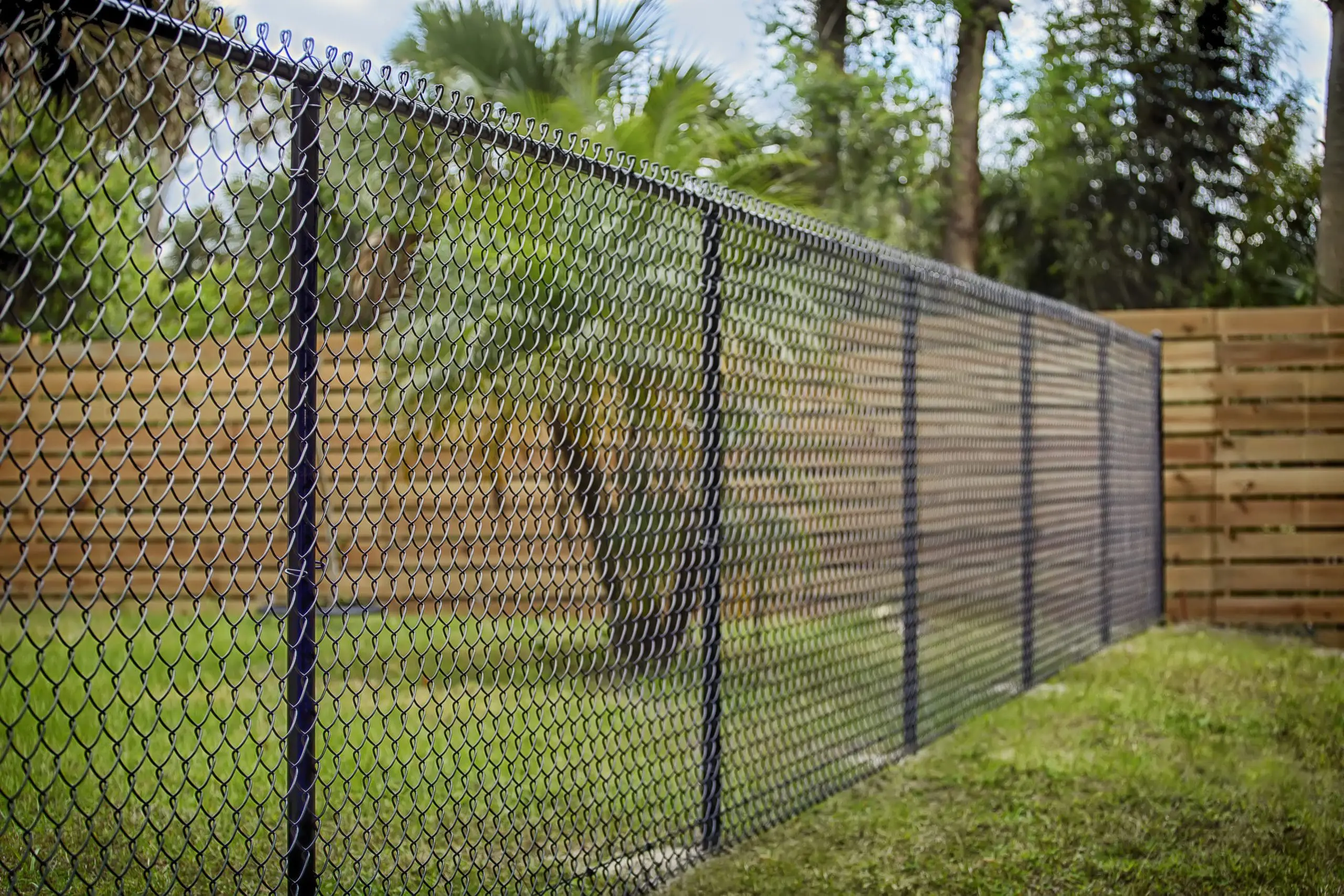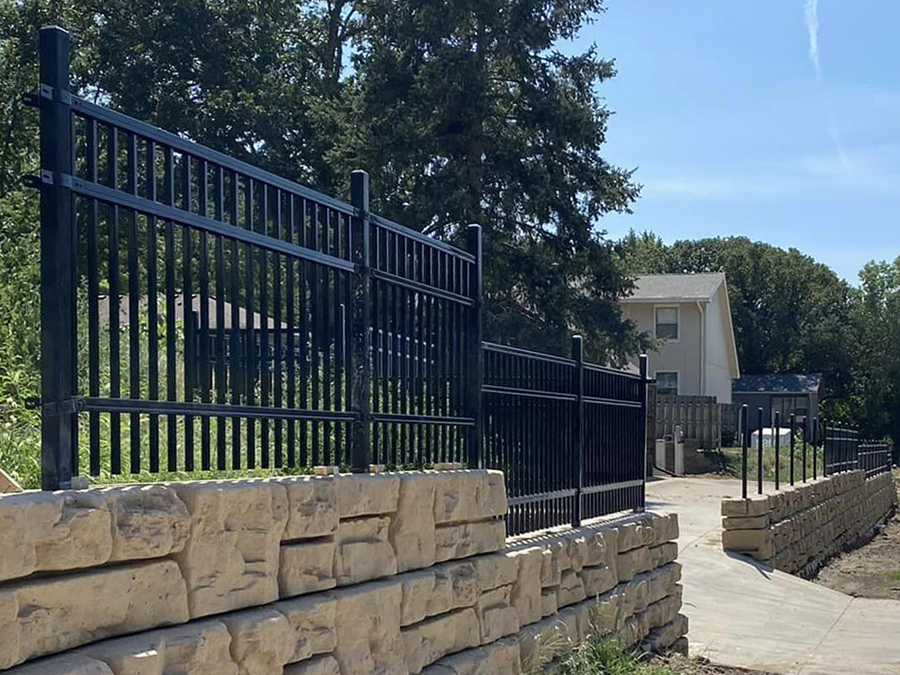How to Identify Typical Problems That Call For Immediate Fence Fixing
When it pertains to maintaining your fencing, it is important to detect concerns before they come to be bigger problems. Consistently looking for signs of decomposing timber, leaning panels, or rust can save you time and money in the future. You could not recognize just how weather condition and parasites can jeopardize your fence's integrity. Allow's discover the usual indicators that show your fencing needs prompt attention, so you can keep your building safe and secure and looking its ideal.
Signs of Rotting Timber in Wooden Fences
Have you noticed your wood fencing looking a bit worse for wear? It could be time to examine for signs of deteriorating timber if so. Initially, check out the base of the posts and panels for soft places. That's a clear sign of rot if you press on the wood and it really feels mushy or crumbles. Next off, try to find staining or dark places on the wood-- these commonly signal moisture damages. Pay focus to any kind of peeling paint or finish, as this can subject the timber to additional decay. In addition, a pungent, moldy odor can indicate fungal growth. Do not forget to inspect connections and joints; if they're loosened or falling apart, the timber beneath is likely compromised. By catching these indicators early, you can stop more substantial damage and keep your fencing standing strong. Routine maintenance is crucial to extending the life of your wood fencing.
Leaning or Tilting Fence Panels
It's vital to comprehend what caused it if you've seen your fence panels leaning or tilting. This concern might show underlying architectural damages that requires your interest. Allow's explore the typical reasons and the repair work options offered to obtain your fence back fit.

Sources Of Leaning Panels
When you observe your fencing panels tilting or leaning, it's frequently an indicator of underlying problems that require resolving. One usual cause is inadequate water drainage; extreme water can erode the dirt around the fence articles, damaging their assistance. One more perpetrator might be solid winds or storms that press against the panels, especially if they're not appropriately secured. In addition, the all-natural settling of dirt in time can create posts to move, bring about a tilt. Insects, like termites, can endanger the integrity of wooden panels, triggering them to lean. Lastly, inadequate installation techniques might lead to panels not being safely set, leaving them vulnerable to leaning under stress. Address these problems promptly to preserve your fence's honesty.
Indicators of Structural Damages
Seeing leaning or tilting fence panels can be disconcerting, as these concerns typically suggest structural damages that requires immediate focus. When your fence starts to lean, it may signify that the blog posts are shifting or that the soil around them has eroded. Pay close interest to gaps in between articles or panels, as these can additionally suggest instability. deck builder. Additionally, look for cracks or splintering in the wood, which can weaken the general structure. If you see corrosion or deterioration on steel components, it could jeopardize the stability of the fence. Bear in mind, ignoring these indications can lead to more severe damage down the line, so it's vital to examine the situation without delay and do something about it prior to it intensifies
Repair Options Available

Rust and Corrosion in Metal Fences
If you have a steel fencing, you could observe corrosion and corrosion creeping in in time, especially if it's exposed to moisture. These issues not just impact the appearance of your fencing yet can likewise endanger its architectural honesty. To determine corrosion, look for reddish-brown areas or patches, which indicate the steel is oxidizing. Rust can spread rapidly if left neglected, leading and compromising the fencing to costly repairs.To deal with rust and corrosion, you ought to cleanse the impacted locations with a cable brush and apply a rust-inhibiting primer. As soon as the primer dries out, consider painting the fence with a weather-resistant paint to safeguard it better. Regular upkeep, such as evaluating for indications of corrosion and touching up paint as needed, will assist expand your fence's life expectancy. Attending to these concerns quickly assures your metal fence continues to be solid and visually appealing for several years to find.
Cracks and Splits in Vinyl Fence

Sources Of Plastic Damage
Plastic secure fencing is preferred for its toughness, yet it can still endure from fractures and splits as a result of different variables. One significant cause is extreme temperature variations. It can deteriorate check my reference the material over time when plastic expands in the heat and contracts in the chilly. In addition, direct exposure to severe sunshine can cause UV destruction, making the plastic weak. Physical impacts, like unexpected crashes or heavy branches, can additionally develop cracks. Poor installment or making use of low-quality materials can exacerbate these problems. Age plays a function; older plastic secure fencing is extra susceptible to damages. Normal inspections can assist you determine these variables before they cause significant issues. Take aggressive measures to ensure your fence stays solid and intact.
Fixing Cracks Effectively
Splits and divides in your plastic fencing can be concerning, addressing them quickly can stop additional damages and maintain the fence's look. Analyze the size of the split. For tiny splits, a plastic fixing set usually includes glue that can bond the sides, providing a seamless solution. Tidy the area completely before applying the sticky, ensuring it adheres properly. For bigger divides, you might need to use a plastic patch. Cut the patch to size, use sticky around the edges, and press it firmly onto the split. Allow it to heal based on the producer's guidelines. Normal upkeep and quick repair work can extend your fence's next life-span, keeping it looking excellent for years to come.
Loosened or Missing Out On Fence Blog Posts
Loose or absent fencing messages can threaten the security of your whole fence structure. If you notice any type of articles wobbling or leaning, it's vital to deal with the problem right away. Examine for any indications of movement, as this can cause more damage over time. You can conveniently examine the trouble by giving each blog post a mild shake-- if it really feels unstable, it's time to take action.For missing out on articles, you'll need to replace them asap to keep your fence's stability. Make certain they're firmly anchored in the ground with concrete or crushed rock for added stability when you install brand-new articles. If an article hangs, tighten it by including additional assistance or driving it deeper right into the ground.Ignoring these issues can result in larger issues, like voids in your fencing and even total collapse. Keep an eye on your posts and stay proactive about fixings!
Damage From Weather and Natural Aspects
Weather condition and natural elements can inflict mayhem on your fencing, bring about numerous kinds of damages that require timely attention. Hefty rainfall can cause timber to rot, making it unpredictable and weak. Snow buildup might flex or break panels, while solid winds can uproot fencing blog posts or create areas to lean.If you notice cracks or splintering in wood fencings, it signifies drying because of intense sunlight exposure. Steel fences can corrosion if protective finishings wear off, specifically in seaside or humid areas.Inspect your fence regularly after storms or severe weather to catch any kind of damage early. Addressing these problems promptly can conserve you from costly repair services down the line. Don't wait up until a small issue develops into a significant one; stay proactive and keep your fencing in leading form to keep both performance and aesthetic allure.
Bug Infestation and Termite Damages
When you notice indicators of parasite infestation or termite damage, it's necessary to act swiftly to prevent additional devastation. Try to find mud tubes along your fencing or hollow-sounding wood, as these indicate termites are at work. You might also see little openings or frass, which is termite droppings appearing like sawdust. If you spot any of these indicators, it's time to assess the damage.Don' t wait up until it's also late; insects can jeopardize your fencing's stability. Evaluate the surrounding area for beetles or ants, as they may be contributing to the trouble. If you presume a problem, take into consideration getting in touch with a parasite control specialist to validate and deal with the issue.Repairing or replacing affected areas of your fencing promptly not just recovers its stamina but additionally protects against parasites from spreading out further. Stay attentive to maintain your residential or commercial property pest-free and protected.
Frequently Asked Inquiries
Exactly how Frequently Should I Check My Fence for Damages?
You need to check your fencing at least twice a year, preferably throughout spring and loss. Normal checks aid you identify damages early, conserving you money and time on repairs while preserving your residential property's look and safety.
Can I Repair a Fencing Myself or Hire a Specialist?
You can absolutely repair a fence on your own if you have the right tools and abilities. Nevertheless, employing a professional assurances quality job and saves you time, specifically for complicated repair work or considerable damage.
What Tools Are Needed for Basic Fence Repair Work?
For fundamental fencing repair work, you'll require devices like a hammer, screwdriver, pliers, a saw, a level, and measuring tape. deck builder. Depending upon the fixing, you might also need nails, screws, or substitute boards
Just How Much Does Fencing Repair Work Normally Expense?
Fence fixing prices differ widely, but you can anticipate to pay in between $200 and $1,500 depending on materials, labor, and degree of damage. It's wise to get several quotes for the ideal offer.
When Is the most effective Season for Fencing Services?
The ideal time for fence repair work is during mild weather, commonly in springtime or very early autumn. You'll stay clear of extreme temperature levels, making it less complicated to function and making certain the materials established effectively for lasting sturdiness (deck builder). Noticing tilting or leaning fencing panels can be alarming, as these concerns often show helpful resources architectural damage that requires prompt interest. Missing or loose fencing posts can threaten the security of your entire fencing framework. Snow accumulation might flex or break panels, while solid winds can root out fence articles or create sections to lean.If you notice splits or splintering in wooden fencings, it's a sign of drying out due to extreme sunlight direct exposure. Metal fencings can rust if protective coatings put on off, particularly in coastal or humid areas.Inspect your fencing regularly after tornados or extreme weather to capture any damages early. Fence repair work prices vary commonly, but you can anticipate to pay between $200 and $1,500 depending on products, labor, and level of damages